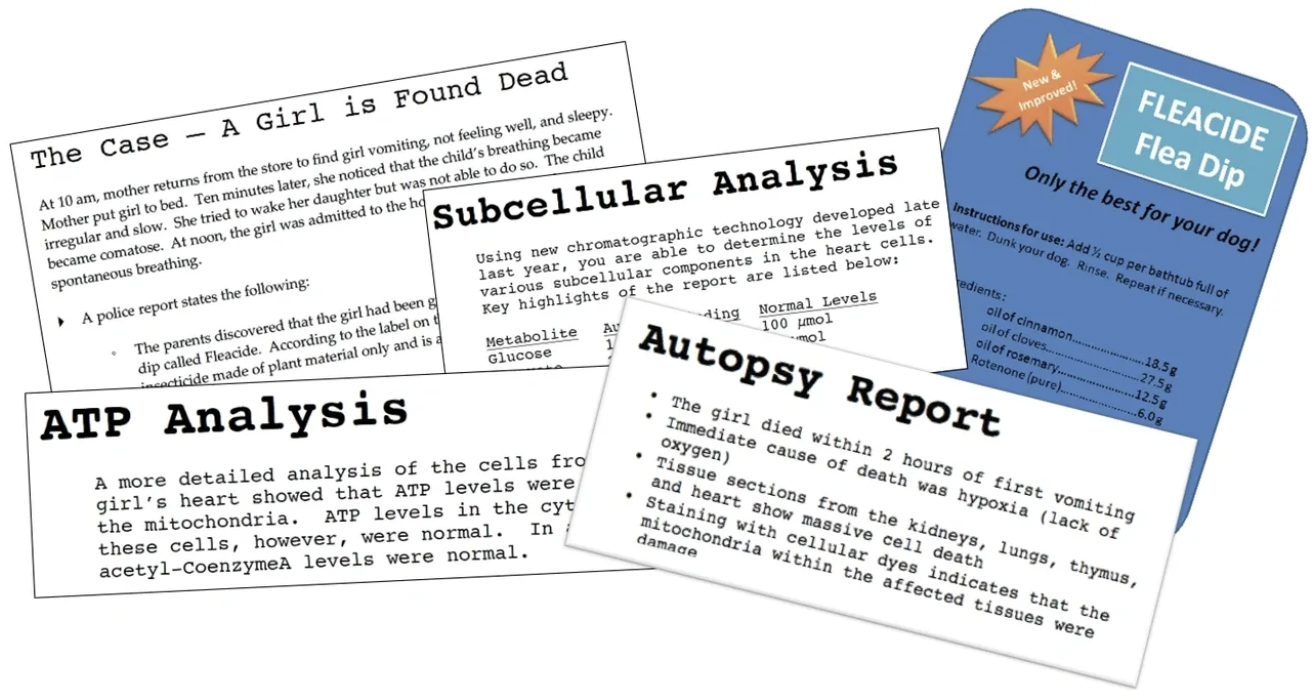
Do any other teachers out there struggle with teaching abstract topic like the electron transport chain? And do any other teachers out there LOVE case studies? If you’re new to this realm, I’ll give you a brief rundown.
Case studies have been used forever in a lot of areas of study – think law, humanities, business, etc. Their use in the science classroom is relatively new, but guys – they can be SO powerful!
Basically, a case study is a way to have students engage in content by following a story and answering thoughtfully developed questions to guide their learning. There are case studies that can be done over several days and others that can be a nice 20-minute introduction to a topic. Sometimes they can be self-contained, with the teacher presenting the task and handing out all required “paperwork” to each small group of students. This can work well, but I often prefer interrupted case studies, where I present a piece of the story and students have a task to do that stems from what I’ve presented. I circulate, guide them when necessary, and listen in on conversations. Then, I get the class’ attention and present the next important piece of information.
I LOVE them. And my students love them too!
My first foray into case studies was the first time that I ever taught the topic of cellular respiration. You know, glycolysis, Krebs, the electron transport chain…all that jazz. I remember finding it confusing when I learned it in high school, so I have put a huge amount of effort into developing a killer Cellular Metabolism unit.
It all starts with a case study. I’ll walk you through this one so that you can see its potential.
I got this case from Cell Biology Education, Vol.3, 062-068, Spring 2004. I personally created or gathered all the resources that I use in the classroom to actually execute the activity.

The jist of the story is that a young girl has unexpectedly passed away, and police learn that she had been giving her dog a bath hours before she was brought to the hospital, comatose. Students need to figure out what happened. The ultimate answer is that a particular protein within the electron transport chain has been affected by the flea dip she was using for her dog’s bath. However, before students make that conclusion they are fed pieces of information that give them an overview of cellular respiration as I hand out materials to build on their ideas and knowledge.

It’s awesome! This kind of activity promotes critical thinking, has students working in groups in a low-pressure situation, gets students asking intelligent questions, and keeps them engaged through a realistic application of the topic. It’s a perfect introduction for this dense topic, which from here leads to full classes about each of the three processes within cellular respiration.
Give a case study a try. My favorite place to use a case study is with a topic that can seem otherwise abstract. They’re super useful in both Biology and Chemistry – my most recent one had students reading a transcript between a boss and the new chemist he had hired, and they used their knowledge of limiting reactants to reveal that the newbie had been pouring millions of dollars of gold down the drain – oops!

You can find some great options by doing a Google search, but The University of Buffalo has an unparalleled collection of case studies ready to use in the classroom (http://sciencecases.lib.buffalo.edu/cs/) . All the cases are free, but the answers and teaching guides come with a $25 yearly subscription (I am in no way affiliated with UB, just a happy teacher!). It’s well worth it!
If you’re interested in my cellular respiration case study, click here for my freebie materials and let me know how it goes!
Scientifically yours,
Mo



